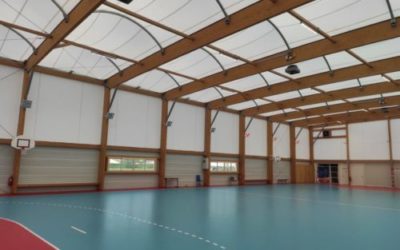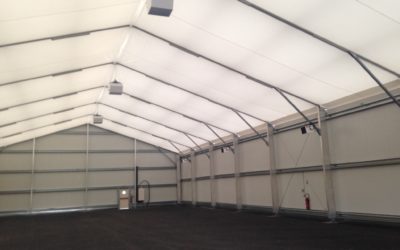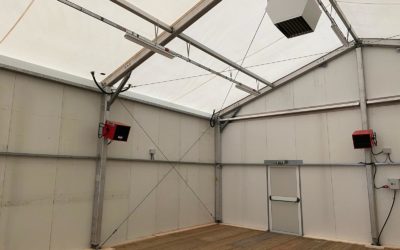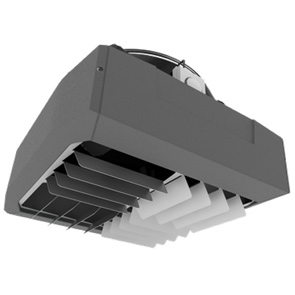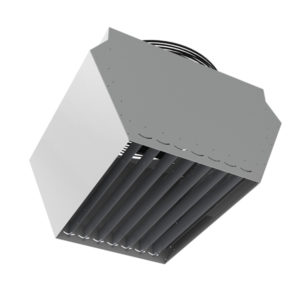What is destratification?
And what's it good for?
The destratifier: an important cost-saving measure for your heating consumption
Air destratifiers are increasingly used in the industrial sector, where they can save up to 30% on heating costs. They also bring comfort to heated premises by homogenizing the air, thanks to fan blades that ensure a good mixing ratio.
It’s also an environmentally-friendly way of dealing with energy loss. With electricity prices on the rise, this installation quickly pays for itself. The CEE bonus is available for industrial destratifiers. We’d like to introduce you to this industrial destratifier, a device that is not well known to the general public, but which is becoming increasingly popular with industrialists.
What is a destratifier?
An air destratifier is a ventilation device used to save energy and keep heat down.
The air destratifier is very useful when the ceiling height is high.
(ceilings greater than or at least equal to 2m50).
The destratifier achieves an optimum mixing ratio in a forced-air heating system.
This equipment consists of a heliocoil fan with supply grilles and adjustable vanes (small blades).
The fan is equipped with an isothermal sensor and a built-in, hard-wired thermostat to regulate speed for optimum air mixing.
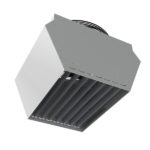
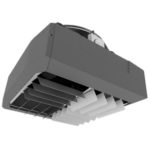
2 examples of destratifiers
What is the function of an air destratifier?
The destratifier optimizes energy consumption by reducing it.
Not to be confused with a simple fan.
This system is mainly used in industrial environments, especially in winter.
What is the process?
For example, in a large, heated room, the air is layered in different ways according to its temperature.
Warm air is lighter than cold air, so it’s trapped higher up, exchanging heat with the ceiling.
Temperature differences can reach 1°C per metre of height, and 1.5°C for ceilings over 4 m high.
Take, for example, a 10m-high industrial room heated to 15°C. You can have hot air at 25°C under the ceiling!
The destratifiers, placed under the ceiling and evenly distributed throughout the room, are activated as soon as the warm air rises under the roof, and continuously stir up the warm air, drawing it down to the ground.
This is how we save money by recovering warm air that would otherwise be lost.
Destratifiers are therefore highly useful and recommended for large buildings, workshops, hangars, structures such as supermarkets, sacred buildings, gymnasiums, refectories, halls, industrial warehouses, etc.
The destratifier is a response to an environmental policy that will be increasingly in demand from manufacturers.
Not only by recovering energy losses, but also by reducing CO2 emissions.
There are two types of industrial destratifiers:
- Destratifiers with an electro-mechanical thermostat, automatically set to a given setpoint.
For example, if the room setpoint is 12°C and the destratifier is located 6m above the floor, it is advisable to set the thermostat to around 16°C. - Destratifiers with PT-100 electronic thermostats, found on the entire Flowair range.
Their setpoint is adjusted by the T-box.
This solution is much more refined and adjustable.
Installation of air destratifiers:
They are generally suspended by cables at around 2/3 of their height.
To install them, we hire a gondola.
Installation is generally permanent.
What type of destratifier should you choose for industry?
Fans for professional or industrial use are more expensive than those for private use.
This is because the destratification system is different.
It’s not a simple fan with slow rotation.
Industrial destratifiers have a higher air flow rate, and the direction of air flow is controlled by adjustable vanes.
Air flow is expressed in m3/h.
Next, we calculate the brew rate required.
It must be around 3 to be efficient.
To calculate this, divide the air flow rate by the volume of the room.
A thermostat and speed regulator are also recommended, if not essential.
For large volumes, we strongly recommend the TBOX remote control (intelligent home automation), which enables precise adjustment and thus optimization of energy management.
Contact polypoles to discuss your project.
Our design office and technical sales staff will respond precisely to your needs.
We have installed numerous destratifiers. The aim in these cases is to reduce heating costs. We’ve received positive feedback on both our installations and our products. Our technicians are true professionals who know their stuff.

